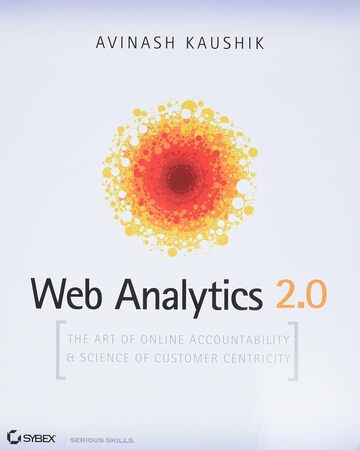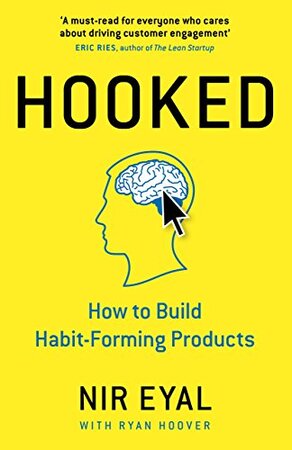
Web Analytics 2.0
Introduction to “Web Analytics 2.0”
Avinash Kaushik’s “Web Analytics 2.0: The Art of Online Accountability and Science of Customer Centricity” is a comprehensive guide that redefines the way businesses approach web analytics. In this section, we’ll delve into the background of the author, the evolving landscape of web analytics, and the overarching philosophy of the book.
Evolution of Web Analytics
Kaushik begins by tracing the evolution of web analytics, from its infancy to the more sophisticated and user-centric practices of Web Analytics 2.0. He highlights the limitations of traditional analytics approaches and sets the stage for a paradigm shift toward a more customer-centric and accountable model.
Core Concepts of Web Analytics 2.0
This section explores the fundamental concepts that form the backbone of Web Analytics 2.0, including the shift from data-centric to customer-centric analytics.
Customer-Centric Analytics
Kaushik emphasizes the importance of focusing on the customer journey and user experience rather than fixating solely on data metrics. He introduces the concept of “Digital Intelligence,” encouraging businesses to move beyond traditional key performance indicators (KPIs) and adopt a more holistic approach to understanding user behavior and preferences.
Four Pillars of Online Analytics
The book introduces the four essential pillars of online analytics: the what, how, why, and who. Kaushik guides readers through understanding what is happening on their websites, how users are interacting, why certain outcomes occur, and who the users are. This comprehensive approach ensures a more nuanced and actionable understanding of online performance.
Implementing Web Analytics 2.0
This section provides practical insights into implementing Web Analytics 2.0, including the use of tools, setting up key performance indicators, and making data-driven decisions.
Choosing the Right Analytics Tools
Kaushik guides readers through selecting the most appropriate analytics tools for their specific needs. Whether it’s Google Analytics, Omniture, or other platforms, the book offers insights into the strengths and limitations of various tools, helping businesses make informed decisions about their analytics infrastructure.
Defining Key Performance Indicators (KPIs)
The author emphasizes the importance of aligning key performance indicators with business objectives. He provides a framework for selecting KPIs that truly matter and contribute to understanding and improving the user experience. This approach ensures that analytics efforts are directly tied to business goals.
Making Data Actionable
Kaushik addresses the challenge of turning data into actionable insights. He introduces the concept of “so what?” and encourages readers to go beyond raw data to derive meaningful conclusions. The book provides practical tips for transforming data into actionable strategies that drive business growth.
Advanced Analytics Techniques
This section delves into advanced analytics techniques, including segmentation, experimentation, and the integration of qualitative data to enhance the depth of analysis.
Segmentation for Deeper Insights
Kaushik advocates for the power of segmentation to gain deeper insights into user behavior. By breaking down data into meaningful segments, businesses can understand the unique needs and preferences of different user groups, leading to more targeted and effective strategies.
Experimentation and Testing
The book explores the significance of experimentation in the online space. Kaushik introduces the concept of A/B testing and encourages businesses to embrace a culture of continuous improvement through iterative testing. He provides practical guidance on setting up experiments and interpreting results for informed decision-making.
Integrating Qualitative Data
Incorporating qualitative data, such as user feedback and surveys, is a key aspect of Web Analytics 2.0. Kaushik demonstrates how qualitative insights complement quantitative data, providing a more holistic understanding of user behavior and preferences. This integration enriches the analytics process and enhances the ability to make customer-centric decisions.
Measuring Success and Future Trends
The final section explores how to measure success in the context of Web Analytics 2.0 and offers a glimpse into emerging trends that will shape the future of online analytics.
Measuring Success Beyond Metrics
Kaushik challenges businesses to move beyond conventional metrics and embrace a broader definition of success. He introduces the “See, Think, Do, Care” framework, emphasizing that success is not solely about revenue and conversions but also about building relationships and delivering value at every stage of the customer journey.
Future Trends in Web Analytics
The book concludes by looking ahead at emerging trends in web analytics. Kaushik discusses the growing importance of mobile analytics, the rise of social media metrics, and the integration of artificial intelligence and machine learning in shaping the future of online analytics. By staying ahead of these trends, businesses can prepare for the evolving landscape of digital marketing and customer engagement.
Conclusion
“Web Analytics 2.0” by Avinash Kaushik serves as an indispensable guide for businesses navigating the complex world of online analytics. With a focus on customer-centricity, actionable insights, and the integration of advanced techniques, Kaushik provides a roadmap for leveraging data to drive meaningful business outcomes. Whether you are a seasoned digital marketer or a newcomer to the field, this book offers a comprehensive and practical approach to understanding and implementing Web Analytics 2.0 principles. Kaushik’s engaging writing style, coupled with real-world examples and actionable advice, makes this book an essential resource for anyone seeking to harness the full potential of web analytics in the digital age.












